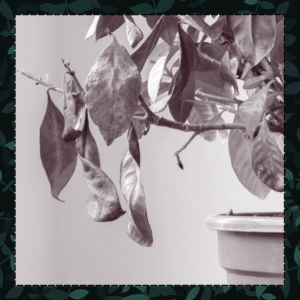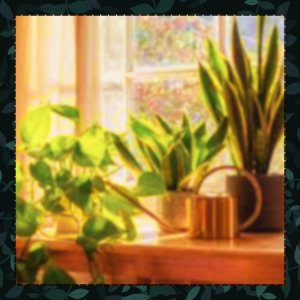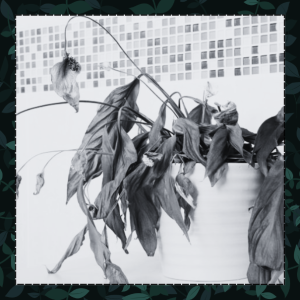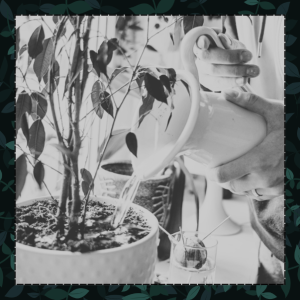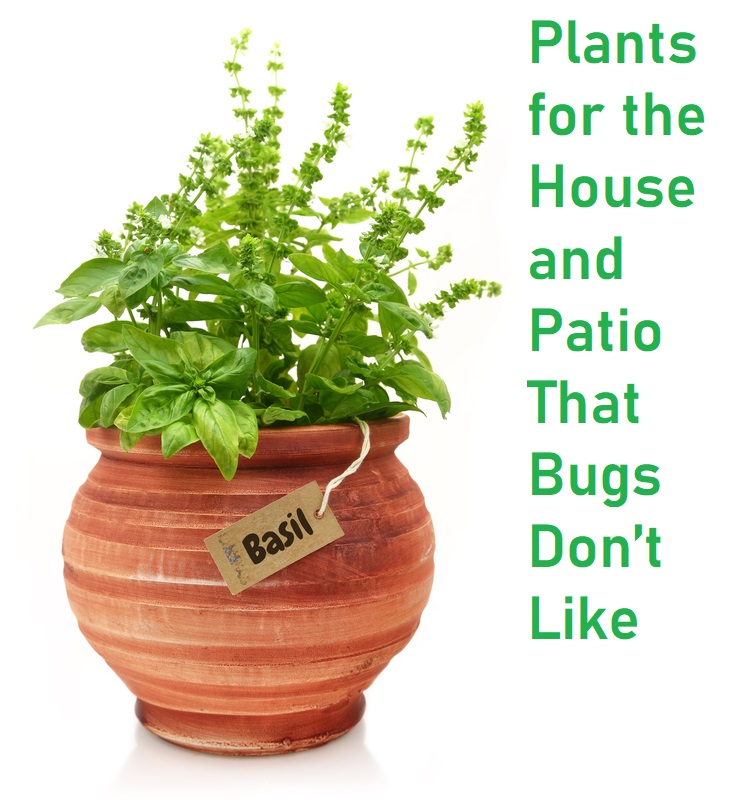HousePlantJoy is supported by our audience. When you purchase through one of our links, we may earn a small affiliate commission. As an Amazon Associate I earn from qualifying purchases. Your cost is not affected.
==================
We all know the feeling – that sinking sensation when our once-vibrant houseplant starts showing signs of distress. The yellowing leaves, the drooping stems, or the ominous brown spots. It’s disheartening. But fear not, plant enthusiasts! Our leafy companions might be resilient, and with a touch of care and a dash of know-how, you can bring them back from the brink.In the world of today, where indoor plants are not just decorations but cherished members of our households, the quest to save dying house plants takes center stage. Join us as we delve into the art of plant revival, exploring the subtle signs of trouble and providing expert-backed solutions to nurse your green friends back to health. Whether you’re a seasoned plant parent or just embarking on your botanical journey, this guide is your go-to resource for cultivating a thriving indoor jungle.
So, let’s embark on a journey to understand the language of leaves, decode the mysteries of root health, and discover the secrets to breathing life back into your cherished house plants. Because, let’s face it, a home filled with healthy, happy plants is a home filled with joy and tranquility. Let the rescue mission begin!
Key Takeaways: Reviving Your Houseplants
- Decode the language of leaves: Understand signs like yellowing, brown spots, and dull foliage.
- Expert solutions: Combat overwatering, poor light, and pests with practical tips.
- Joy in plant parenthood: Experience the satisfaction of reviving your green companions.
Save Dying House Plants – Expert Tips for Success!
Ensuring the vitality of our leafy companions is a universal desire. Yet, as living entities, plants confront the inevitable challenges posed by pests and diseases. The question arises: Can we truly salvage a dying house plant when it succumbs to these afflictions, often culminating in a sorrowful demise?
Houseplants, with their silent grace, contribute a unique beauty to our lives. However, the reality for plant enthusiasts, whether seasoned or novice, involves facing the somber task of rescuing ailing house plants. Picture it: your cherished green companion, perhaps even your favorite, encountering issues that signal a gradual decline.
In the midst of modern lifestyle shifts, there’s a discernible uptick in the appreciation for indoor plants. A resurgence of greenery has found its way into our homes, with more individuals acknowledging the therapeutic presence of these botanical cohabitants.
Our Green Friends
Not the envious companions, mind you—rather, those leafy or spiky house plants!
Our verdant allies, the house plants, are a source of immense joy. Beyond their aesthetic charm, these green companions serve as stress-relievers, creating a tranquil atmosphere within our homes.
The delight of selecting a new plant and carefully situating it in our living spaces is a familiar pleasure for many. Yet, after a span of days, weeks, or months, the once-vibrant greenery may lose its luster. Yellowing leaves, falling foliage, or a noticeable limpness—it’s a scenario every plant enthusiast has faced. The pressing question arises: Can a withering plant be revived? Should you attempt it? Is there hope for rescuing dying house plants?
Indeed, the answer is a resounding yes. Every plant, clinging by a thread—or roots—yearns for survival. The gratification derived from nursing a struggling plant back to health is genuinely fulfilling. Even if your efforts fall short, the knowledge that you gave it your best shot is a triumph in itself. Fortunately, more often than not, the quest to save dying house plants proves successful.
Intriguingly, there are those who deliberately choose ailing plants from discount and box stores. While some may not withstand the odds, many emerge victorious. It’s a process that demands a blend of time and expertise—understanding the problem at hand and applying the right remedy.
When you observe a plant’s health declining, the crucial first step is to diagnose the issue. Determination is key, allowing you to unravel the mystery and comprehend the necessary fix. For those just starting their journey as plant enthusiasts, whether at work or home, here are our insights to guide you through the process.
5 Signs Your Houseplant Is Passing On
Its Leaves Are Yellowing.
Yellow leaves serve as a signal, and according to expert insight from Pole as shared with House Wonderful, the most common culprit behind this discoloration is overwatering. A cautious examination is warranted: scrutinize the pot and its saucer to ensure there’s no excess water lingering. Pole emphatically advises against a scenario where the roots of an indoor plant are consistently submerged or sitting in standing water. Such conditions lead to root suffocation, spelling potential doom for the entire plant.
It’s essential to note that once leaves have turned yellow, they won’t revert to their verdant state, as highlighted by Pole. To address this, meticulous care is required. Trim any damaged foliage with precision, employing sharp shears or pruning shears. For hygiene purposes, between each cut, it’s advisable to cleanse the blades with rubbing alcohol. This meticulous approach ensures not only the removal of ailing leaves but also prevents the potential spread of issues, fostering a healthier environment for your plant’s recovery.
Its Leaves Are Turning Earthy Colored or Brown.
Conversely, brown leaves typically indicate a different issue, as elucidated by Pole—it’s a sign that your plant is thirsty and excessively dry. This condition, as Pole explains, is often a result of insufficient moisture or poor water quality. Much like the case with yellow leaves, addressing the problem of brown leaves is imperative.
To remedy this parched state, interventions should be tailored to rejuvenating the plant’s hydration levels. Understanding the intricacies of your plant’s water requirements and ensuring a suitable watering routine is pivotal. By delving into the root cause of the issue, you embark on a journey to revive your plant from the brink of dehydration, ultimately restoring its vitality and lush greenery.
Its Foliage Looks Somewhat Dull.
When you notice faded or dull leaves on your plants, it’s a subtle yet significant indicator that they might be receiving an excess of light. In a manner reminiscent of human experiences, plants, too, can suffer from sunburn. If your plants are subjected to an overwhelming amount of light, the consequences manifest in the form of lackluster, dreary foliage and leaves that appear stretched or branched out. Notably, the manifestation of light brown edges and spots further signals this light-induced stress.
Understanding the delicate balance of light requirements for your plants is crucial. Just as we seek shade to avoid sunburn, your plants thrive when shielded from excessive light exposure. Adjusting their environment to strike the right balance will not only prevent the disheartening sight of dull leaves but also promote the overall well-being of your botanical companions.
Its Roots Are Standing Out.
A clear sign that your plant is in need of a change of scenery arises when you observe its roots meandering along the surface of the pot or protruding through drainage openings. This scenario signals that your plant has become root-bound, and its quest for expansion demands more space.
When roots outgrow their confined quarters, it’s a call to action—the time has come to consider repotting. This essential intervention ensures that your plant can stretch its roots comfortably, acquiring the space it needs for sustained growth and development. By responding to this timely cue, you not only address the physical constraints of a cramped container but also provide your plant with an opportunity to flourish in its expanded, rejuvenated home.
Leaves Spots Appear.
The emergence of small brown spots amidst a sea of yellow leaves is a telltale sign that your plant may be grappling with a Leaf Spot Infection. This affliction occurs when intrusive organisms or microorganisms take residence on the leaves, inducing the appearance of these distinct brown spots within the yellowed areas. The spots, characterized by variations in size, shape, and color, signify the ongoing feast of the attacking organisms on the leaves.
It’s crucial to recognize these symptoms promptly, as addressing a Leaf Spot Infection requires a targeted approach. By identifying the nature and extent of the infection, you pave the way for an effective treatment strategy that curtails the spread of the issue and encourages the eventual recovery of your plant.
Problems with Solutions
Overwatering Woes: Navigating Symptoms and Solutions
Symptoms: If you find your plant’s leaves donning a yellow hue, the soil appears persistently damp, and unwelcome parasites are setting up camp at the base, the culprit is likely overwatering. It’s an easy trap to fall into, especially for those unsure of how frequently their new plant companions crave hydration.
Solution: The key lies in understanding your plant’s unique needs. For sun-loving desert plants and succulents, bask them in sunlight—their preferred drying agent. Allow these resilient plants a dry respite, about a week, before treating them to a rejuvenating drink. Conversely, shade-loving plants like ferns thrive in consistently moist soil. Permit them to approach dryness, but once that threshold is reached, swiftly rehydrate them.
Problem Fix: No plant relishes the notion of its roots bathing in excess water. Ensuring your pot boasts excellent drainage is paramount—this can be achieved through a drainage hole in the base or a layer of pumice or porous ceramic shards. These materials absorb surplus water, gradually releasing it and averting the perils of waterlogged roots. It’s a simple yet effective fix that promotes a harmonious balance in your plant’s hydration regimen.
Deciphering Thirst: Recognizing and Remedying Water Deprivation
Symptoms: If your plant’s leaves are sporting a droopy demeanor and parting ways prematurely, it’s a surefire signal that the plant is yearning for more water.
Solution: The primary goal is to achieve uniform dampness in the soil and then allow it to undergo a drying phase before the next watering. Most indoor plants favor warm, tepid water over extremes of cold or hot temperatures.
- The first method: Pour a modest amount of water into the center of the pot, allowing it to permeate the soil. Repeat this process until the soil is thoroughly saturated. A reliable guideline for the total amount is about a quarter to one-third of the pot’s volume.
- The second method – soaking: Place the potted plant in a sink or bowl and gradually pour water onto the soil’s surface. Continue until approximately half an inch of water has traversed the pot, collecting in the sink or bowl. Allow the plant to soak—perhaps for an entire day. Afterward, remove it and let it drip dry before returning it to its planter or saucer. This method is particularly effective when the pot features a drainage hole at the base, even if it’s made of plastic.
Prevention: Avoid the tendency to hastily pour water onto the plant, only to witness it swiftly draining out the base. This doesn’t equate to adequate watering. Insert your finger into the soil; if the center of the root ball remains dry, your plant hasn’t been sufficiently watered. This underscores the significance of soaking.
Tip: Disregard the oft-suggested ice cube trick for gradual water release. Opt for proven methods that prioritize the specific hydration needs of your plant, ensuring its well-being is not compromised.
Deciphering Sunlight Needs: A Guide to Optimal Exposure
Indications: While most indoor plants can withstand a gentle stream of light, it’s crucial to gauge their tolerance. Sunlight filtering through a window is relatively gentle, but certain plants, such as ferns and calathea, reveal signs of overexposure—whitened leaves serve as a telltale indicator. Conversely, insufficient light may prompt plants to become spindly, leggy, or commence shedding leaves, as explained by Chris.
Solution: Striking the right balance is key. Many houseplants thrive in conditions of medium to bright light. Chris draws attention to the fiddle-leaf fig, a sun-loving specimen often found in the sun-drenched outdoors of Florida. The challenge lies in recognizing the specific light requirements of your plant and ensuring it receives an appropriate dosage.
Prevention: Artificial light can be a viable solution to supplement natural light, especially in homes with lower light levels. While no bulb perfectly mimics the full spectrum of sunlight, opting for a more intense bulb can enhance the overall lighting effect. Understanding your plant’s light preferences and proactively adjusting its exposure can significantly contribute to its overall well-being and vibrancy.
Balancing Fertilization: A Plant’s Multivitamin Regimen
Indications: Much like humans, plants can exhibit signs of nutritional imbalances. Excessive fertilization leads to a phenomenon known as salt burn, marked by crisp edges and leaves taking on a brown or dark hue. This overdose can propel the plant into a self-destructive course with alarming speed. Conversely, insufficient fertilization may cause a plant to stagnate, ceasing its flourishing journey. In nature, plants continually seek new nutrients by extending their roots, but in a pot, the nutrient realm is limited, and you, the caregiver, hold the reins.
Solution: Assume the role of a benevolent guardian for your green charges, providing them with the equivalent of a multivitamin—compost. Following the instructions on the label, administering the right dosage becomes crucial. It’s a direct infusion of vital nutrients that ensures your plant’s sustained well-being and longevity.
Prevention: Gems, liquid formulations, or slow-release pellets can be your allies in preventing nutrient deficiencies or excesses. Understanding your plant’s specific needs and adhering to recommended fertilization practices transforms you into a conscientious caretaker, ensuring your plants receive the nutrients they crave for a thriving existence.
Cracking the Pot Code: Gauging Adequate Space for Growth
Awareness: A golden rule to discern if your plant is feeling cramped is to examine the pot’s proportions. Ideally, the plant’s volume should balance with two-thirds above ground and one-third below. A strategic dirt level, resting an inch or two below the pot’s rim (depending on size), allows water to pool before seeping in.
Awareness: When you acquire a plant housed in a plastic pot, immediate repotting is not just a suggestion; it’s a necessity. These plants are often sold in congested conditions, never meant for long-term residence in those restrictive pots. For them to truly flourish, they need room to stretch and grow.
Tip: Avoid allowing your soil to age excessively. Over time, potting mixtures degrade and accumulate debris. Even with regular fertilization, periodically swap out a portion of the soil. This not only rejuvenates the growing medium but also offers an opportune moment to assess if your plant is signaling its readiness for a larger abode. It’s a dual-purpose practice, ensuring both soil health and your plant’s potential for spacious growth.
Deciphering the Dry Spell: Unveiling Your Plant’s Plea for Humidity
Indicators of Aridity: When your cherished plant begins to exhibit signs of distress—leaves turning crisp and brittle—this is a definitive sign that the air surrounding it lacks the essential moisture it craves.
Mitigation Tactics: Safeguarding your leafy friends from the clutches of dry air emanating from vents, heaters, radiators, or air conditioners is the initial step. Yet, when combating persistent humidity woes, the resounding recommendation echoes in triplicate: “Humidifier, humidifier, humidifier.” Opt for the most substantial humidifying ally you can find; a sizeable investment that not only nurtures your plants but also contributes to your personal well-being. Should a substantial humidifier be beyond reach, positioning a smaller counterpart in close proximity to your plant still delivers noteworthy benefits.
Preventive Measures: While sporadic misting provides ephemeral relief, its impact fades as the mist dissipates. For a more enduring solution, consider orchestrating a congregation of plants with akin humidity preferences. This strategic grouping mirrors a microclimate, tailor-made to accommodate their shared needs. A word of caution—maintain equilibrium, for if one plant attracts pests, the entire community may fall prey to the infestation. The essence lies in striking a harmonious balance.
Confronting the Bug Invasion: Strategies for Combatting Unwanted Pests
Indicators of Infestation: When pests infiltrate your green haven, they often take the guise of mealybugs resembling diminutive white cotton balls, or other intruders that bear a striking resemblance to, well, conventional bugs.
Combat Tactics: Resorting to a potent insecticide may seem like unleashing a nuclear bomb on your plant—an extreme measure that risks harming the very entity you’re trying to protect. A gentler approach is recommended: commence with a thorough wash using warm water, meticulously wiping down the plant to eradicate as many bugs as possible. Follow this cleansing ritual with a spray of horticultural oil or insecticidal soap, ensuring you reach into the crevices and undersides of the leaves.
Preventive Measures: Upholding the cleanliness of your plant is a formidable defense—dust or gently wipe its leaves regularly to discourage pests from settling in. A vigilant eye is key; regular inspections can nip potential infestations in the bud before they escalate into a full-blown invasion. Stay proactive, and your plant will thank you for the pest-free sanctuary you provide.
Unraveling the Enigma: Culprits Behind Fading Greenery
- Root Rot
- Starvation
- Shock
- Fungus
- Cramping
- Spider Mites
- Scale
- Not Enough Light
- Powdery Mildew
- Whiteflies
Closing Thoughts: Reviving Your Ailing Houseplants with Success
In the realm of indoor gardening, where our homes transform into verdant havens, the journey of saving dying house plants is a fulfilling endeavor. As we close the chapters on identifying yellow leaves, dealing with root issues, and thwarting pests, remember this: not every plant may be saved, but the effort is always worthwhile.
Truth be told, expert plant enthusiasts often seek out the challenge of rescuing discounted, seemingly doomed plants – and more often than not, they succeed. Armed with insights into the subtle cues of plant distress and armed with practical solutions, you too can become the hero your withering house plants deserve.
So, as you navigate the nuanced world of overwatering, under-fertilizing, and battling pests, take heart. With experience, you’ll find it becomes second nature to diagnose and remedy issues, turning your home into a flourishing haven of greenery.
In the end, a thriving indoor garden isn’t just about the plants; it’s about the sense of accomplishment when you witness their resurgence. Cherish the journey, revel in the victories, and let your indoor oasis be a testament to the nurturing touch of a caring plant parent.
FAQs: Reviving Your Houseplants with HouseplantJoy
Can every dying houseplant be revived?
Yes, with the right care and knowledge, many ailing houseplants can be successfully revived. Understanding the specific signs of distress and applying expert-backed solutions increases your chances of success.
What should I do if my plant’s leaves are turning yellow?
Yellowing leaves often signal overwatering. Ensure proper drainage, trim damaged foliage, and let the soil dry between watering. Prevention involves understanding your plant’s unique water requirements.
How do I combat pests without harming my plants?
Combat pests with a gentle approach: wipe down the plant, use horticultural oil or insecticidal soap, and maintain cleanliness. Regular inspections and proactive measures help prevent pest infestations, ensuring a healthy environment for your houseplants.
? Unlock the World of Houseplant Joy! ?
Discover the ultimate hub for plant enthusiasts! ? Follow us on Facebook, Instagram, Pinterest, and Twitter for captivating content, insightful product reviews, and a vibrant community dedicated to nurturing and reviving houseplants. ? Join the green revolution today! #HouseplantJoy ?


